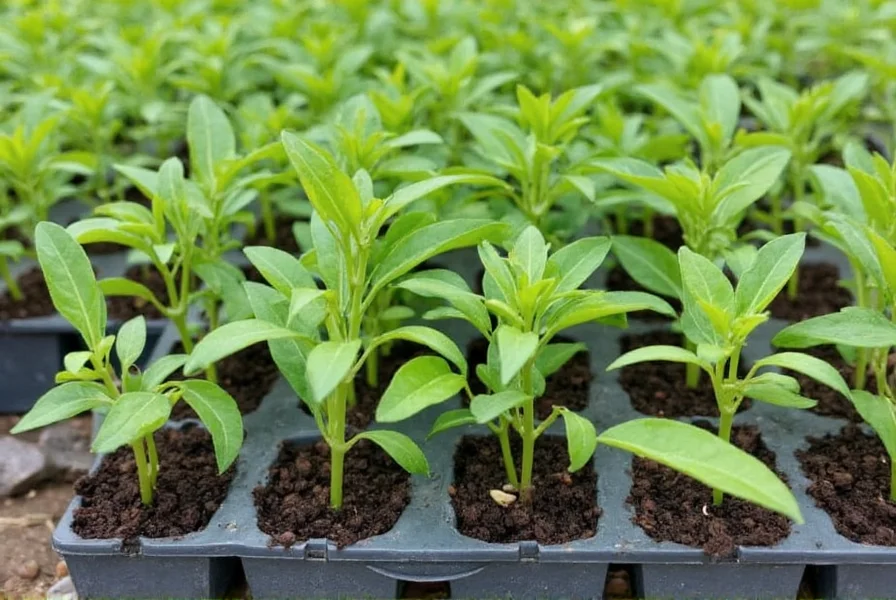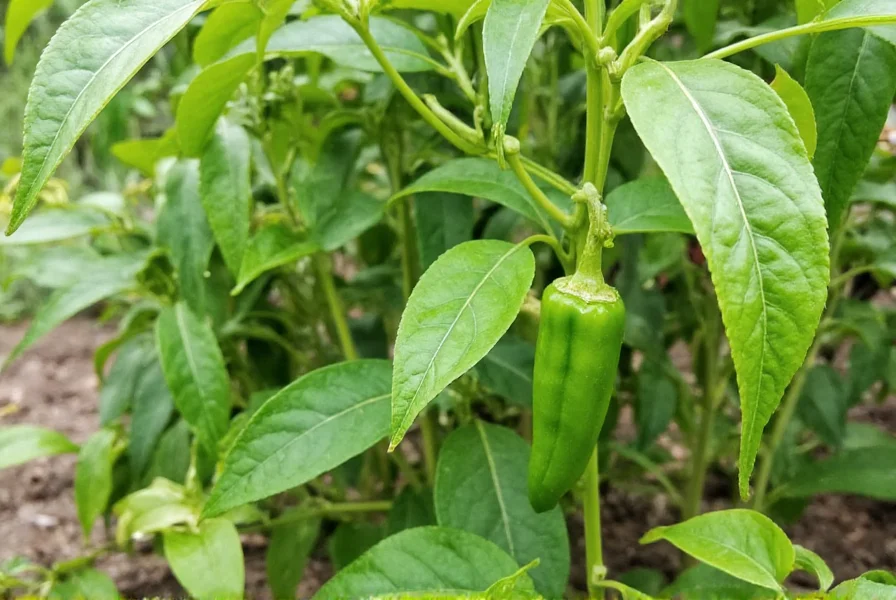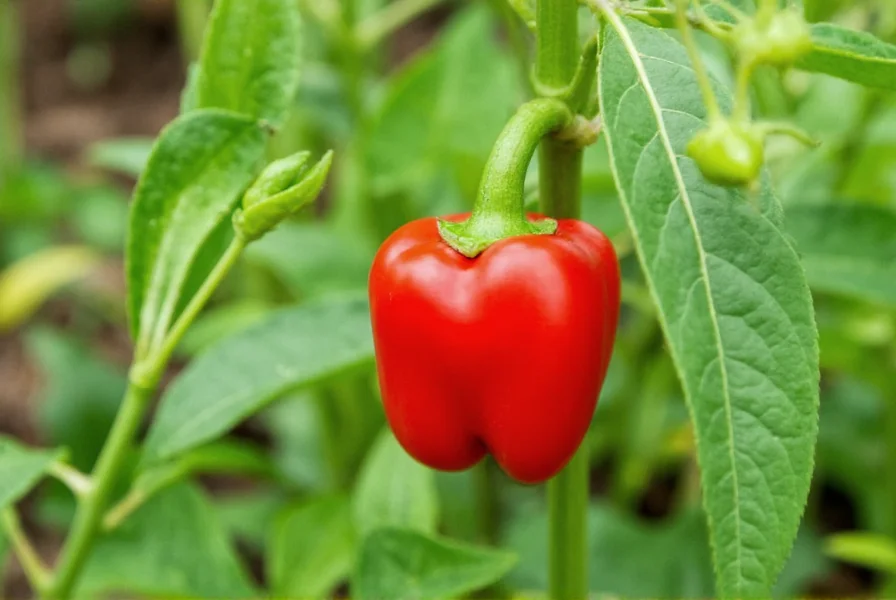Peppers add vibrant color and flavor to home gardens, whether you're growing sweet bell peppers or fiery hot varieties. Successful pepper cultivation combines proper timing, soil preparation, and attentive care throughout the growing season. This comprehensive guide covers everything you need to grow healthy, productive pepper plants in your garden.
Choosing the Right Pepper Varieties for Your Garden
Selecting appropriate pepper varieties is crucial for garden success. Consider these factors when choosing which peppers to grow:
- Climate compatibility - Some varieties like 'Cubanelle' perform better in cooler climates, while 'Jalapeño' and 'Cayenne' thrive in warmer regions
- Growing season length - Sweet bell peppers typically need 60-90 days to mature, while hotter varieties like 'Habanero' may require 90-120 days
- Space requirements - Compact varieties like 'Lunchbox' peppers work well in containers or small gardens
- Intended use - Choose sweet peppers for fresh eating and salads, hot peppers for sauces and preservation
For beginners, reliable starter varieties include 'California Wonder' bell peppers, 'Hungarian Wax' for medium heat, and 'Serrano' for those wanting hotter options. When planning your garden layout, remember that most pepper plants grow 18-24 inches tall and need 18-24 inches between plants.
Optimal Timing for Planting Peppers
Timing your pepper planting correctly significantly impacts your harvest. Peppers are warm-season crops extremely sensitive to cold temperatures. Follow these timing guidelines:
| Region | Last Frost Date | Soil Temperature | Planting Timeframe |
|---|---|---|---|
| Northern climates | May-June | 65°F minimum | Transplant 2-4 weeks after last frost |
| Moderate climates | March-April | 65°F minimum | Transplant 1-2 weeks after last frost |
| Warmer climates | February | 65°F minimum | Transplant immediately after last frost |
For best results, start pepper seeds indoors 8-10 weeks before your area's last expected frost date. Use seed trays with individual cells and a quality seed starting mix. Maintain soil temperature at 75-85°F for optimal germination, which typically occurs in 7-21 days. Harden off seedlings gradually over 7-10 days before transplanting to outdoor gardens.

Soil Preparation and Planting Techniques
Proper soil preparation creates the foundation for healthy pepper plants. Peppers require well-draining soil rich in organic matter:
- Test your soil pH and amend to reach 6.0-6.8 (peppers prefer slightly acidic conditions)
- Incorporate 2-3 inches of compost or well-rotted manure into the top 6-8 inches of soil
- Add balanced organic fertilizer according to package instructions before planting
- Consider raised beds if you have heavy clay soil to improve drainage
When transplanting pepper seedlings:
- Dig holes slightly larger than the root ball
- Plant at the same depth as in containers (don't bury the stem deeper)
- Space plants 18-24 inches apart with 24-36 inches between rows
- Water thoroughly after planting
- Apply 2-3 inches of organic mulch to conserve moisture and regulate soil temperature
For direct seeding (less recommended but possible in long-season climates), plant seeds 1/4 inch deep after soil has warmed, thinning to the strongest seedling when plants have 2-3 sets of true leaves.
Essential Pepper Plant Care Throughout the Growing Season
Consistent care ensures healthy growth and maximum yields. Focus on these critical aspects of pepper plant maintenance:
Watering Requirements for Pepper Plants
Peppers need consistent moisture but dislike soggy roots. Follow these watering guidelines:
- Provide 1-2 inches of water per week, more during extreme heat
- Water deeply 2-3 times weekly rather than frequent shallow watering
- Morning watering reduces disease risk compared to evening watering
- Use drip irrigation or water at the base to keep foliage dry
- Reduce watering slightly when fruits begin to ripen to intensify flavor
Fertilizing Strategies for Productive Pepper Plants
Peppers benefit from balanced nutrition throughout their growth cycle:
- Apply balanced fertilizer (10-10-10) at planting time
- Side-dress with calcium-rich fertilizer when first flowers appear to prevent blossom end rot
- Switch to low-nitrogen, high-phosphorus fertilizer once flowering begins
- Consider foliar feeding with liquid seaweed every 2-3 weeks for micronutrients
- Avoid excessive nitrogen which promotes leafy growth at the expense of fruit production
Sunlight and Temperature Management
Peppers thrive in warm conditions with ample sunlight:
- Provide 6-8 hours of direct sunlight daily (more in cooler climates)
- Maintain temperatures between 70-85°F for optimal growth
- Use black plastic mulch to warm soil in cooler climates
- Provide afternoon shade in extremely hot climates (above 90°F)
- Protect plants from temperatures below 55°F with row covers

Managing Common Pepper Plant Problems
Even with proper care, pepper plants may encounter challenges. Here's how to address frequent issues:
Pest Control for Pepper Gardens
Common pepper pests and organic solutions:
- Aphids - Spray with strong water stream or insecticidal soap
- Spider mites - Increase humidity, spray with neem oil
- Hornworms - Hand-pick or use BT (Bacillus thuringiensis)
- Flea beetles - Use floating row covers early in season
- Whiteflies - Yellow sticky traps, insecticidal soap
Disease Prevention and Treatment
Prevent common pepper diseases with these strategies:
- Blossom end rot - Maintain consistent soil moisture, ensure adequate calcium
- Tobacco mosaic virus - Rotate crops, avoid tobacco products near plants
- Phytophthora blight - Improve drainage, avoid overhead watering
- Verticillium wilt - Rotate crops, plant resistant varieties
- Anthracnose - Remove affected fruit, apply copper fungicide
Harvesting and Preserving Your Pepper Crop
Knowing when and how to harvest peppers maximizes flavor and plant productivity:
- Most peppers can be harvested at any stage, but flavor intensifies as they mature
- Use sharp scissors or pruners to cut peppers from the plant (don't pull)
- Bell peppers turn from green to red, yellow, or orange as they ripen
- Hot peppers develop more complex flavors when fully colored
- Regular harvesting encourages more fruit production
- Store harvested peppers in the refrigerator crisper drawer for 1-2 weeks
- Freeze, dry, or pickle excess peppers for long-term storage
For continuous production, pick sweet peppers when they reach usable size but before full color development. Allow hot peppers to fully ripen on the plant for maximum heat and flavor. Remember that most pepper varieties will continue producing until frost if harvested regularly.
Extending Your Pepper Growing Season
Maximize your pepper harvest with these season extension techniques:
- Use black plastic mulch to warm soil earlier in spring
- Start seeds indoors 10-12 weeks before last frost for head start
- Use cloches or cold frames to protect young plants from late spring cold
- In fall, cover plants with row covers when temperatures drop below 50°F
- Container-grown peppers can be moved indoors before first frost
- Select fast-maturing varieties (under 60 days) for shorter growing seasons
Frequently Asked Questions About Growing Peppers
How long does it take for peppers to grow from seed to harvest?
Most pepper varieties take 60-90 days from transplanting to first harvest. From seed to harvest typically requires 90-120 days, depending on the variety. Sweet bell peppers generally mature in 60-90 days after transplanting, while hotter varieties like habaneros may need 90-120 days. Starting seeds indoors 8-10 weeks before your last frost date gives you a head start on the growing season.
Why are my pepper plants flowering but not producing fruit?
Several factors can cause pepper plants to flower but not set fruit. Temperature extremes are the most common culprit - peppers won't set fruit when daytime temperatures exceed 90°F or nighttime temperatures drop below 60°F. Inadequate pollination, excessive nitrogen fertilizer, inconsistent watering, and plant stress can also prevent fruit set. Try gently shaking plants during flowering to improve pollination, ensure proper watering, and consider using a phosphorus-rich fertilizer to encourage fruit development.
Can I grow peppers in containers successfully?
Yes, peppers grow well in containers with proper care. Choose compact varieties like 'Lunchbox' or 'Thai Hot' for best results. Use containers at least 5 gallons in size with excellent drainage. Fill with high-quality potting mix (not garden soil), and ensure plants receive 6-8 hours of direct sunlight daily. Container-grown peppers need more frequent watering and feeding than garden-grown plants, as pots dry out faster and nutrients leach out with watering. Monitor soil moisture closely and fertilize every 2-3 weeks with a balanced liquid fertilizer.
What are the best companion plants for peppers?
Excellent companion plants for peppers include basil, which repels pests and enhances flavor; onions and garlic, which deter many common garden pests; and marigolds, which help repel nematodes. Avoid planting peppers near fennel or kohlrabi, which can inhibit their growth. Beans and peas can provide nitrogen to the soil but may compete for space with larger pepper varieties. Consider planting low-growing herbs like oregano or thyme as living mulch around pepper plants to conserve moisture and suppress weeds.
How do I prevent blossom end rot on my peppers?
Blossom end rot appears as dark, sunken spots on the bottom of pepper fruits and is caused by calcium deficiency often triggered by inconsistent watering. Prevent it by maintaining even soil moisture through regular, deep watering and mulching. Test your soil and amend with garden lime or gypsum if calcium levels are low. Avoid excessive nitrogen fertilizers that promote leafy growth at the expense of fruit development. Some pepper varieties are more susceptible than others, so consider trying different varieties if blossom end rot persists despite proper care.











 浙公网安备
33010002000092号
浙公网安备
33010002000092号 浙B2-20120091-4
浙B2-20120091-4